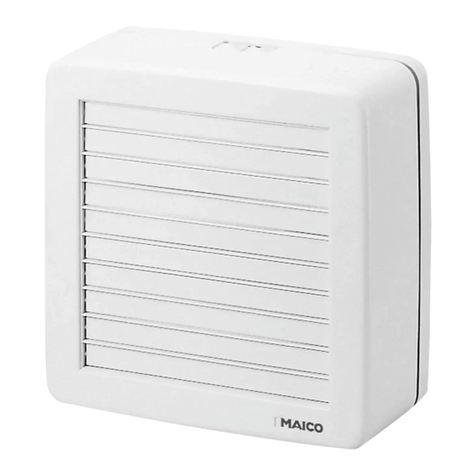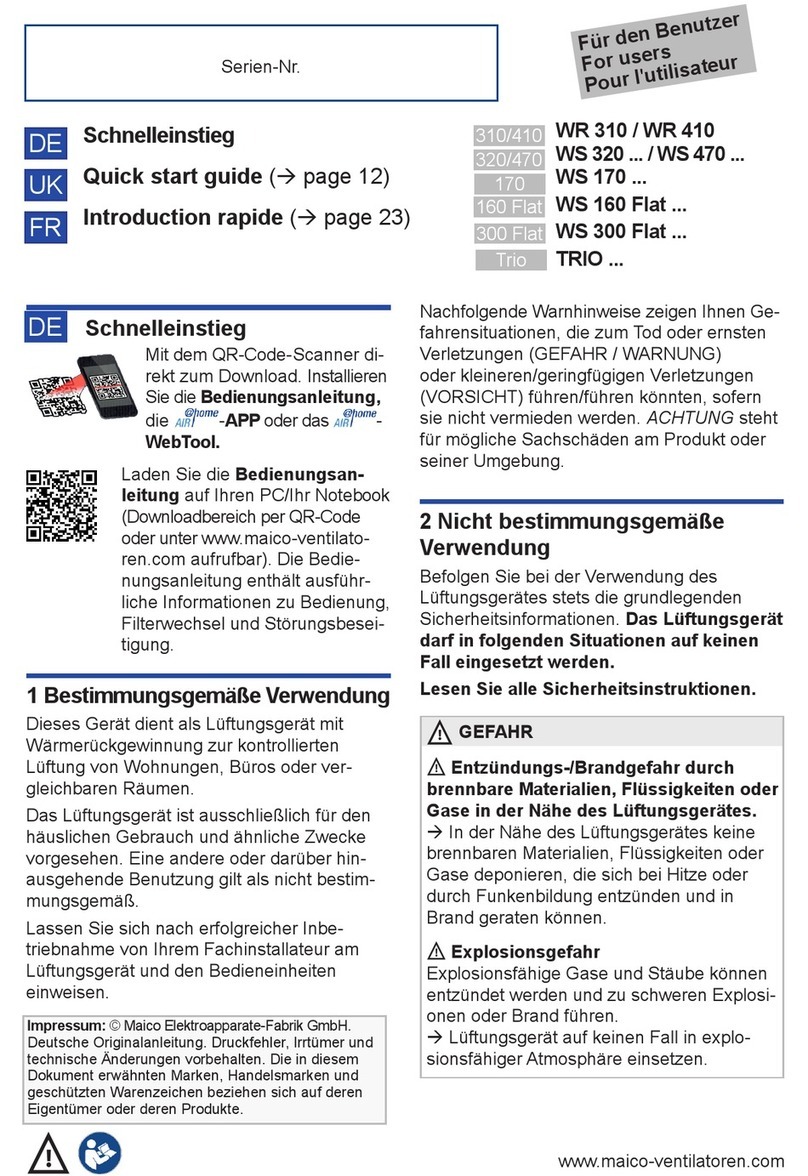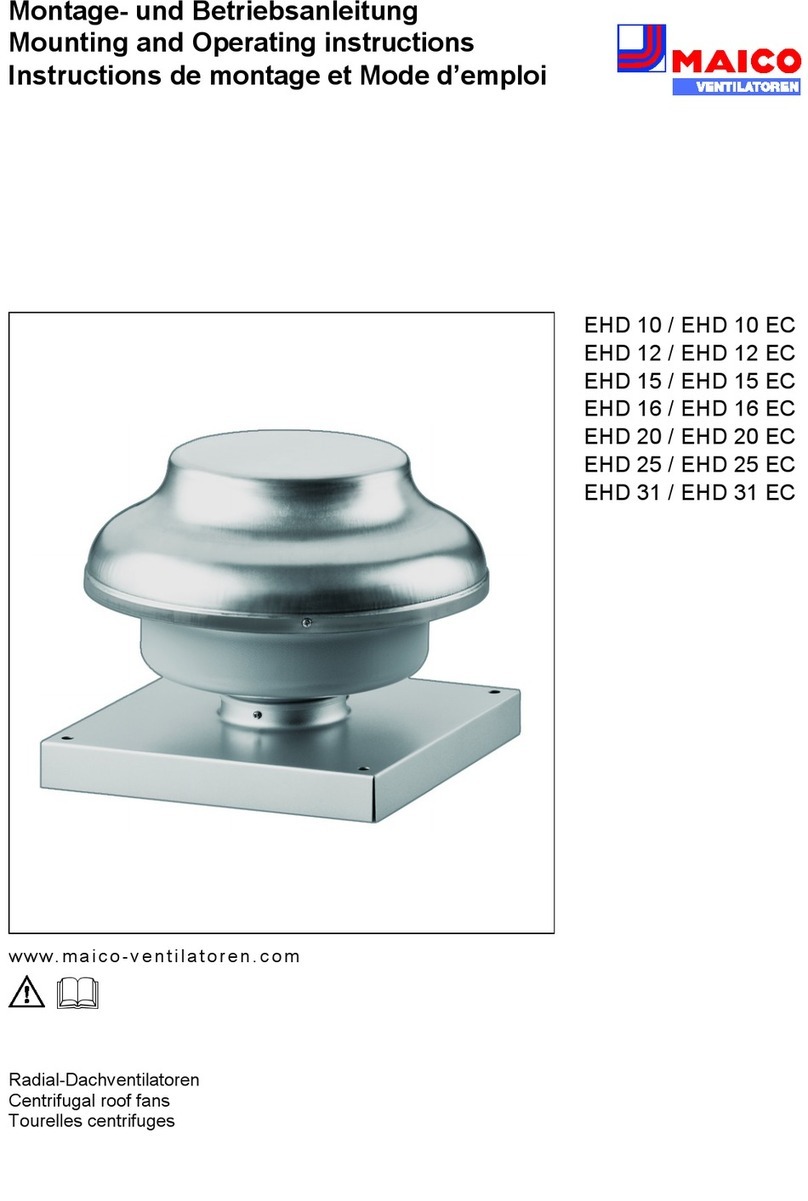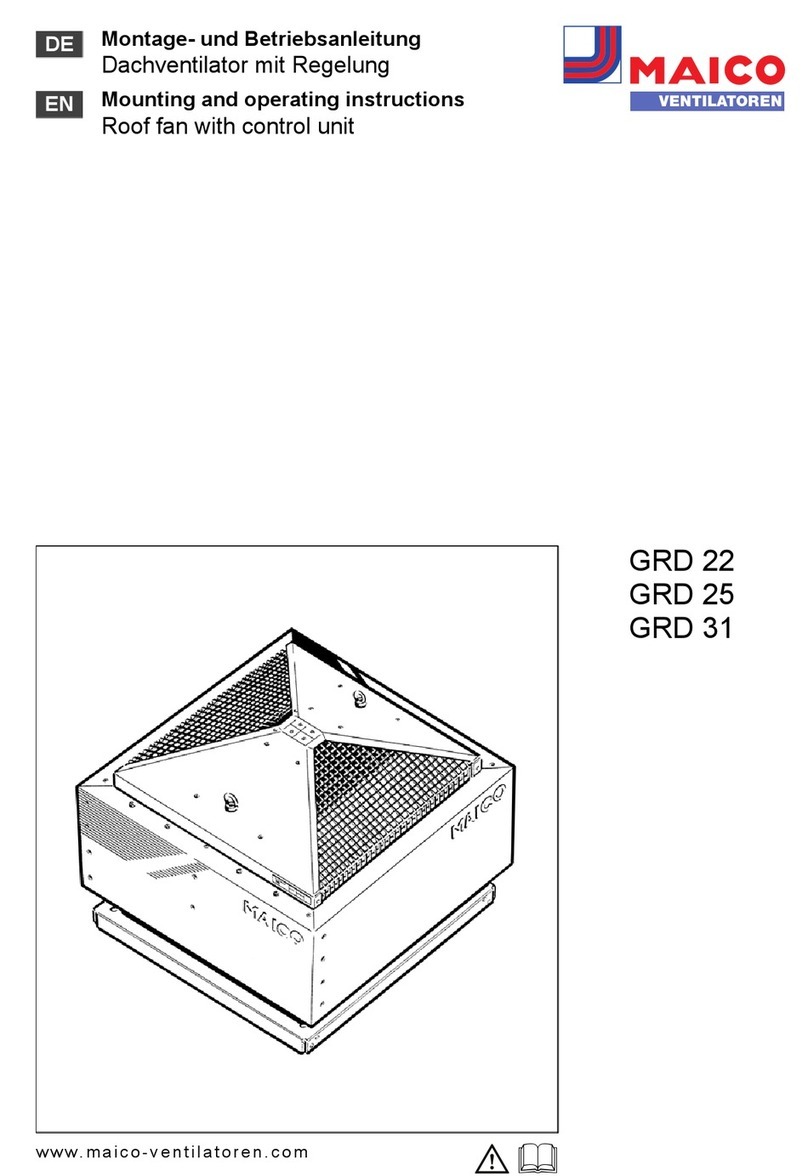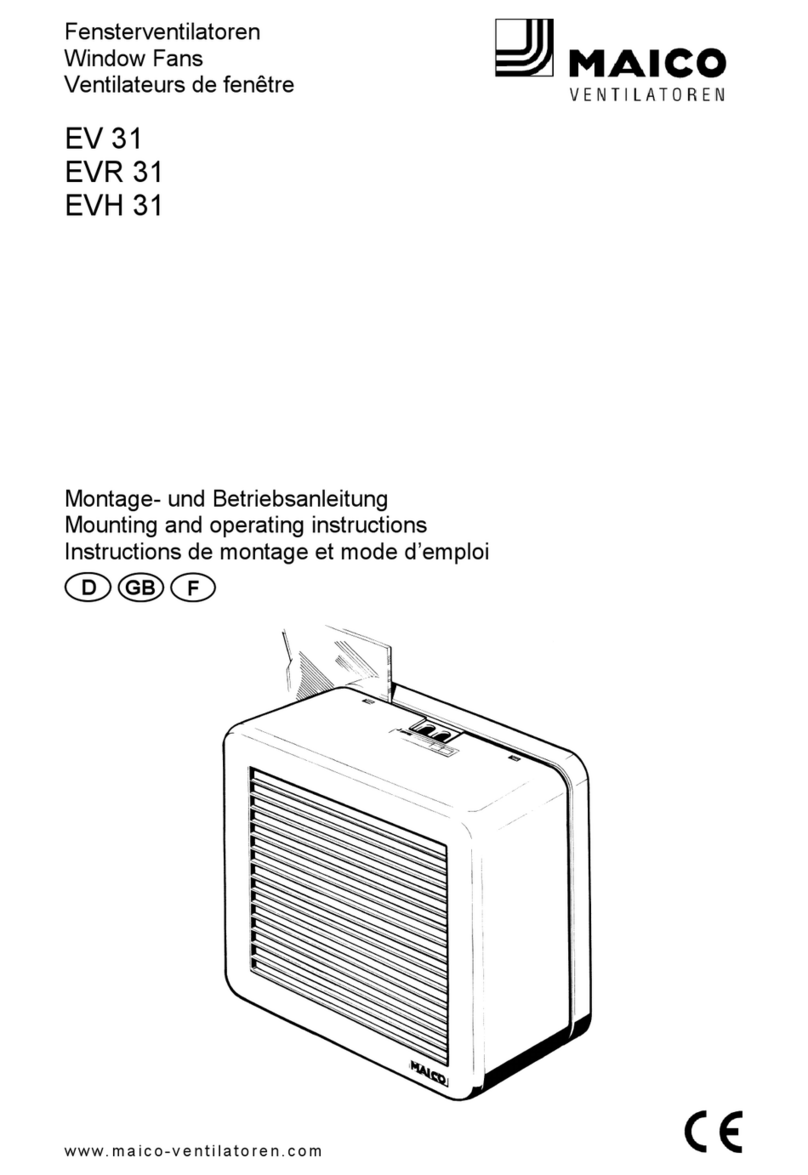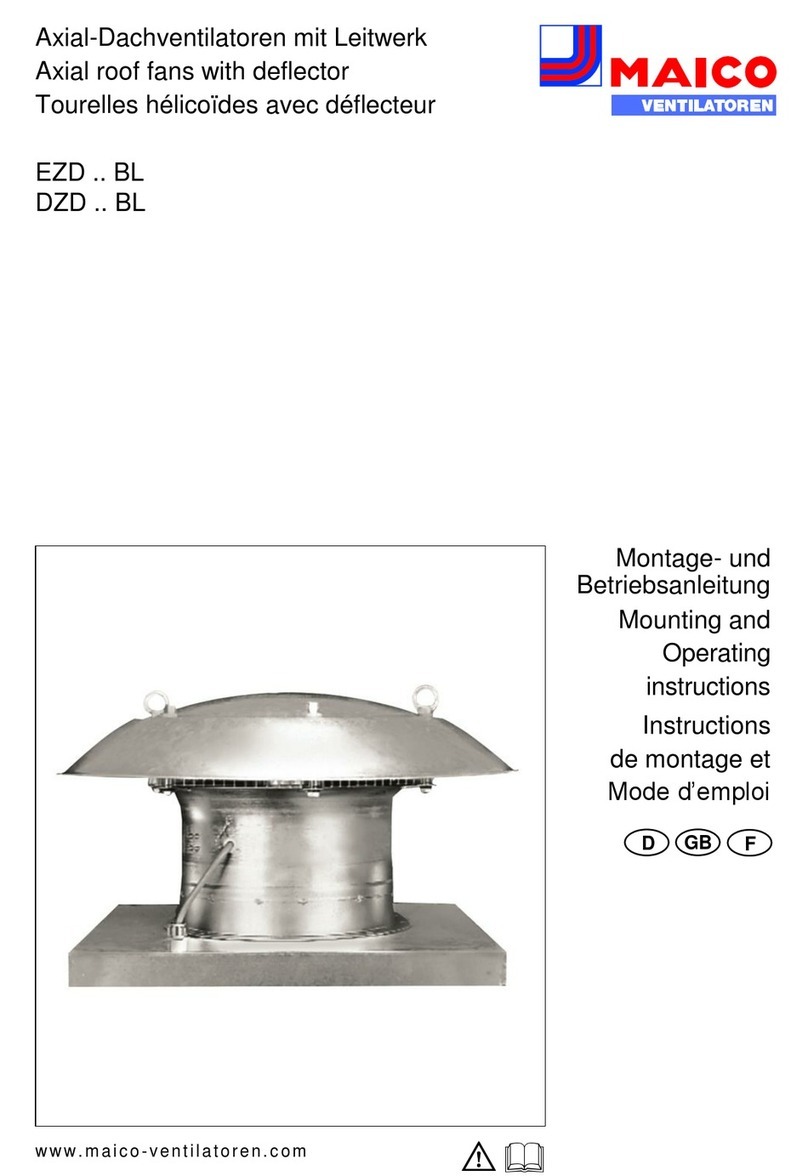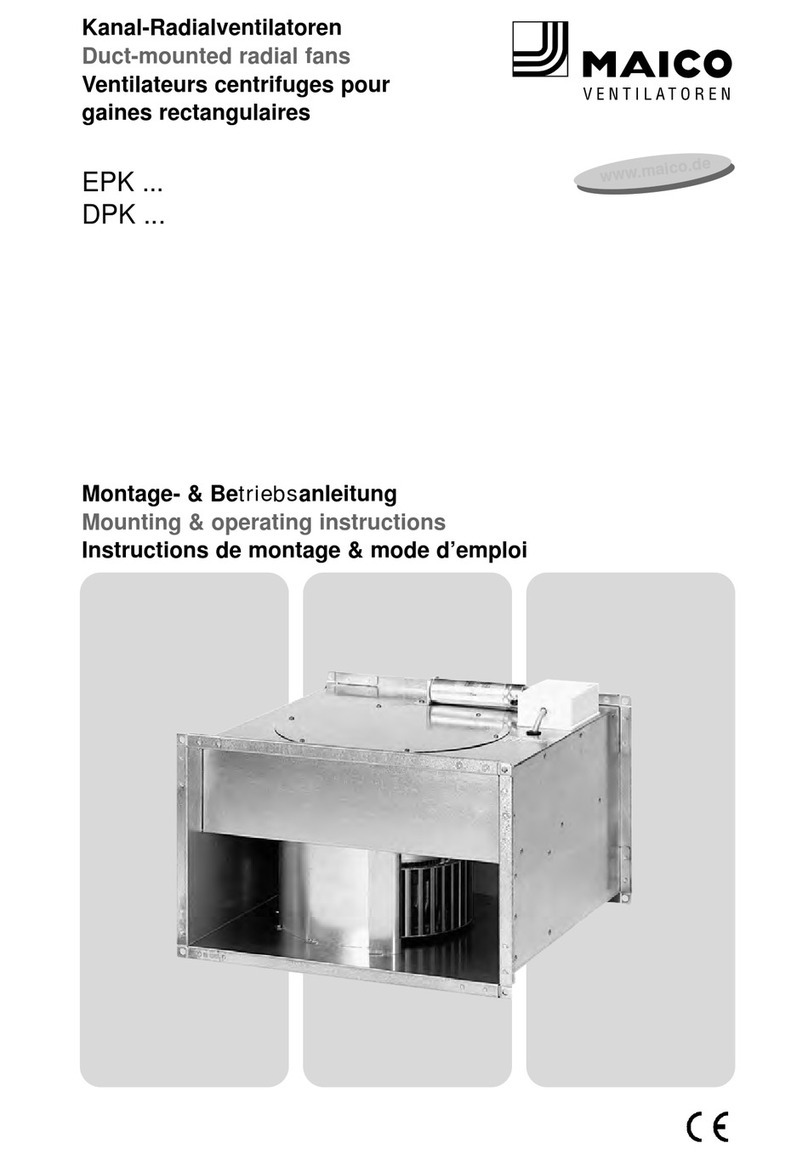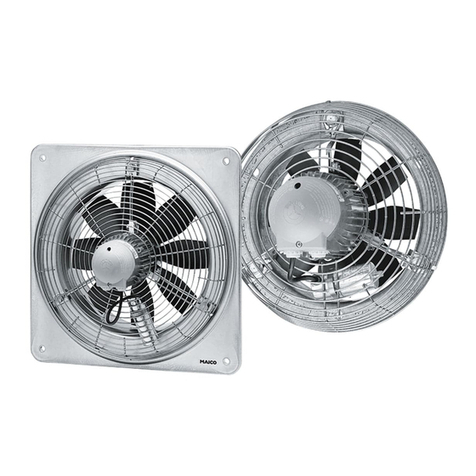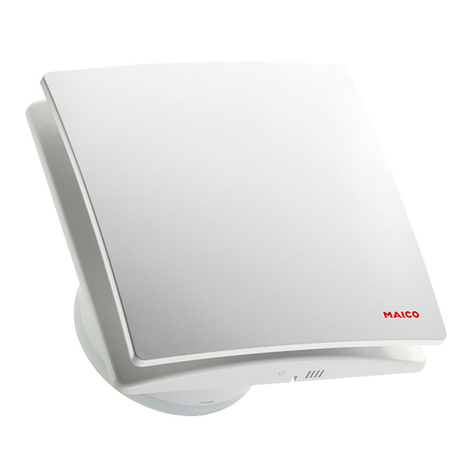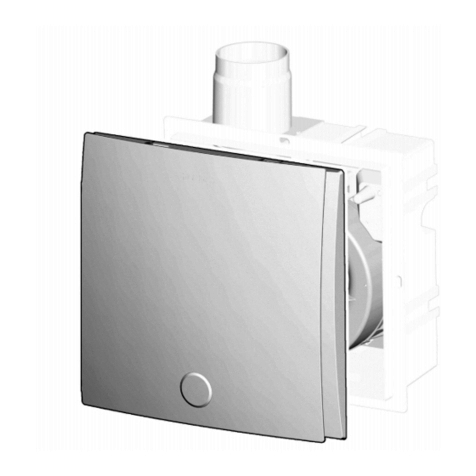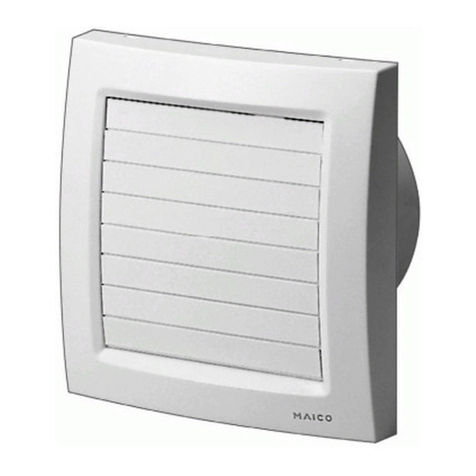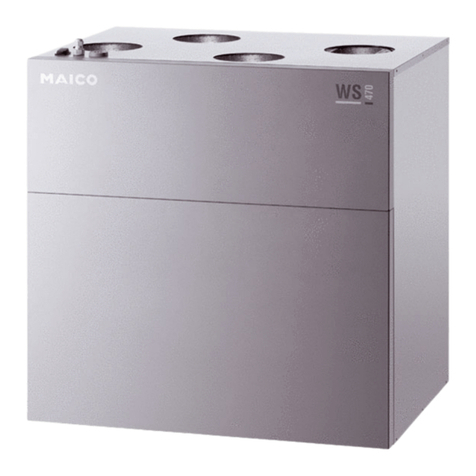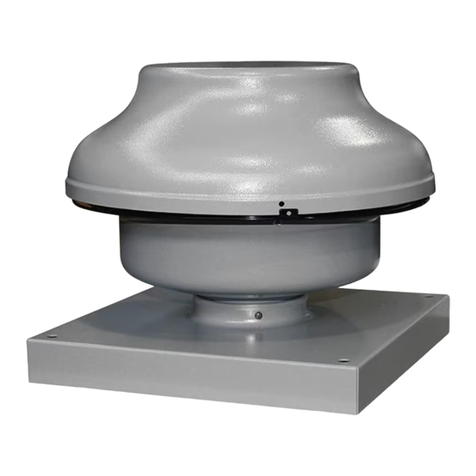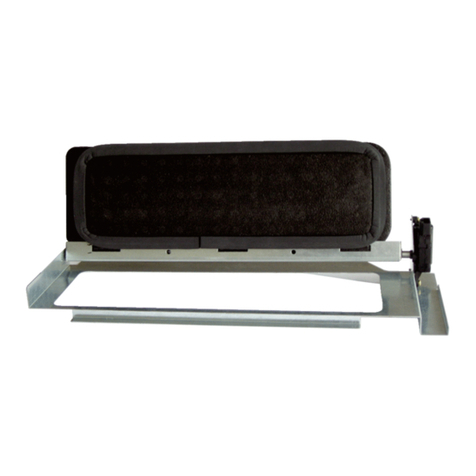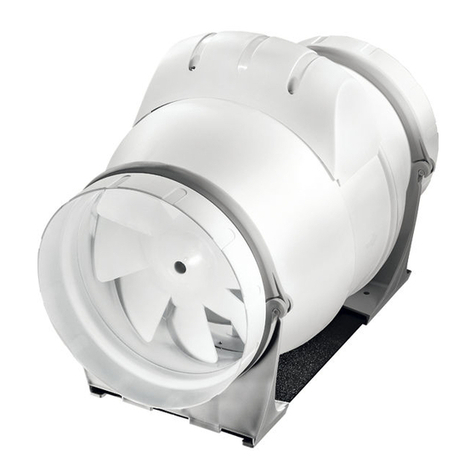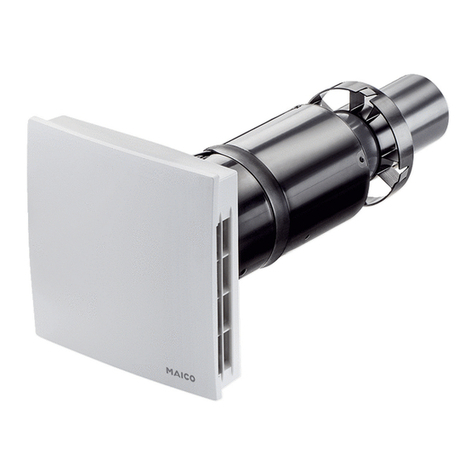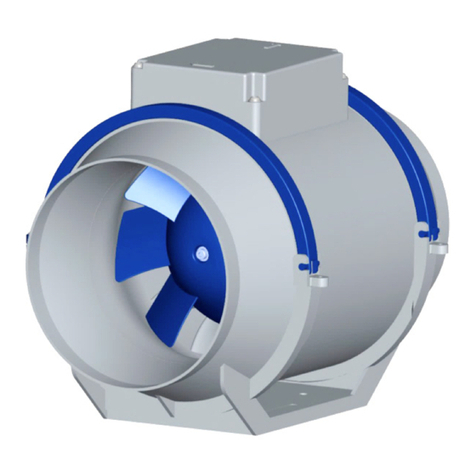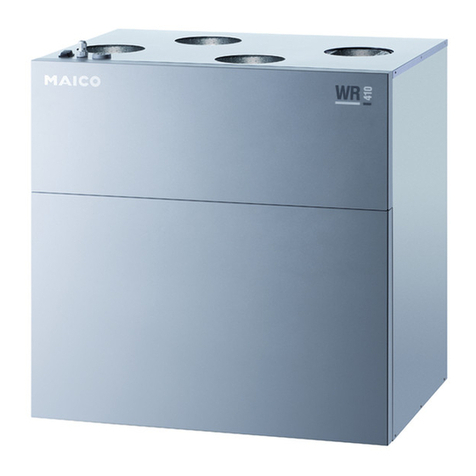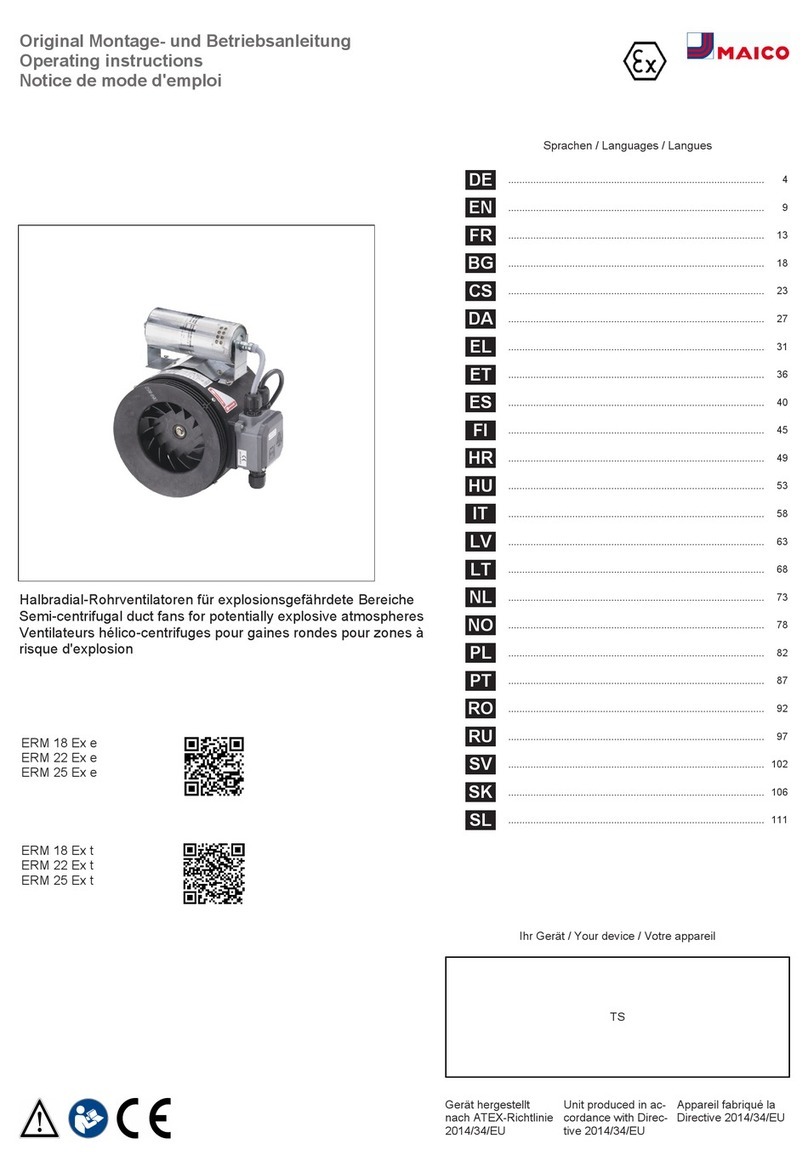
Table of contents
2
Table of contents
Overview of UPG system ..................... 4
1 Scope of delivery .................................. 5
2 Intended use.......................................... 5
3 Safety instructions ............................... 5
3.1 General safety instructions............. 5
3.2 Safety instructions regarding in-
stallation, operation, cleaning and
maintenance...................................
6
4 System and product information ........ 8
4.1 Certificates of approval................... 8
4.2 Installation conditions ..................... 8
4.3 Permitted exhaust air systems ....... 8
4.4 Possible combinations.................... 8
4.4.1 ER-UP housing types..... 9
4.4.2 Flush-mounted housing
ER-UP/G ........................
9
4.4.3 Flush-mounted housing
ER-UPD .........................
9
4.4.4 Flush-mounted housing
ER-UPB..........................
9
4.4.5 Fan insert ....................... 9
4.4.6 ER-UP controls (circuit
board types) ...................
9
5 Technical data....................................... 11
5.1 Environmental conditions and oper-
ating limits.......................................
11
5.2 Regulations for operation with fire-
places .............................................
11
5.3 Technical data table ....................... 11
5.4 Storage........................................... 11
6 Mounting preparations......................... 11
6.1 Requirements in line with approval. 11
6.1.1 Approval provisions........ 11
6.2 Preparations for wall installation..... 13
6.3 Ceiling installation preparations...... 14
6.4 Preparations for the electrical con-
nection............................................
16
6.5 Preparing the shut-off device/shut-
ter ...................................................
16
6.5.1 Plastic shutter without
fire protection ‒ ER-UP/
G housing.......................
16
6.5.2 Fire protection shut-off
device - ER-UPD and
ER-UPB housing............
17
7 Housing installation ............................. 17
7.1 Installing ER-UP/G housing............ 17
7.2 Installation information for ER-UP/
G housing........................................
18
7.3 Important information about plas-
tering ...............................................
18
7.4 ER-UP/G wall installation, single
room ................................................
18
7.5 ER-UP/G ceiling installation, single
room ................................................
20
7.6 ER-UP/G wall installation, second
room ................................................
21
7.7 ER-UP/G ceiling installation,
second room....................................
22
7.8 Installation of ER-UPD housing....... 22
7.9 Installation information for ER-UPD
housing............................................
22
7.10 Important information about plas-
tering ...............................................
22
7.11 ER-UP/D installation, single room ... 22
7.12 ER-UP/D installation, second room. 24
7.13 Installation of ER-UPB housing ....... 24
7.14 Installation information for ER-UPB
housing............................................
25
7.15 Important information about plas-
tering ...............................................
25
7.16 ER-UP/B installation, single room ... 26
7.17 ER-UPB/R, ER-UPB/L and ER-
UPB/U installation (second room) ...
27
8 Electrical connection ............................ 28
8.1 Electrically connecting the unit........ 29
9 Installation of fan insert and cover ...... 29
9.1 Settings on electronic circuit
boards .............................................
29
9.2 Electronic circuit boards ER 60 I
and ER 100 I ...................................
30
9.3 Electronic circuit boards ER 60
VZC and ER 100 VZC.....................
30
9.4 Electronic circuit board ER 100 RC. 30
9.5 Installing fan insert/exhaust air ele-
ment ................................................
30
9.6 Installing the cover .......................... 31
10 Commissioning...................................... 32
11 Operating the unit.................................. 32
12 Cleaning, maintenance ......................... 32
12.1 Filter change, second room............. 33
12.2 Removing fan insert ........................ 33
13 ER-AS extraction socket for WC
odour extraction ....................................
34
14 Fault rectification................................... 34

